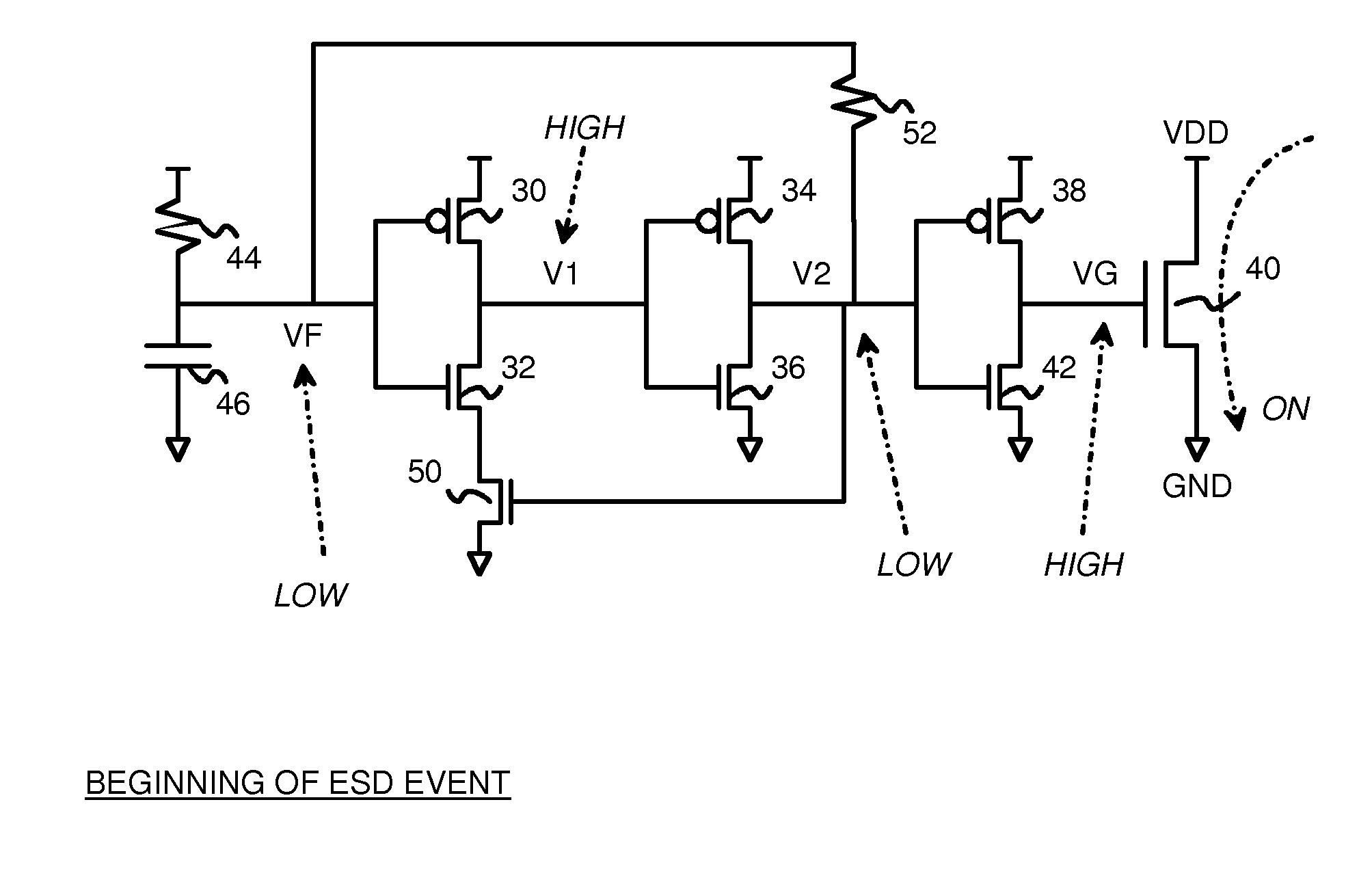NMOS-Based Feedback Power-Clamp for On-Chip ESD Protection
a technology of esd protection and power clamps, applied in emergency protective arrangements, electrical devices, emergency protection arrangements for limiting excess voltage/current, etc., can solve the problems of discharging esd pulses using chip internal transistors, thin oxide and insulating layers that can easily be damaged, and extremely small transistors produced by semiconductor process technology
- Summary
- Abstract
- Description
- Claims
- Application Information
AI Technical Summary
Problems solved by technology
Method used
Image
Examples
Embodiment Construction
[0024]The present invention relates to an improvement in ESD protection circuits. The following description is presented to enable one of ordinary skill in the art to make and use the invention as provided in the context of a particular application and its requirements. Various modifications to the preferred embodiment will be apparent to those with skill in the art, and the general principles defined herein may be applied to other embodiments. Therefore, the present invention is not intended to be limited to the particular embodiments shown and described, but is to be accorded the widest scope consistent with the principles and novel features herein disclosed.
[0025]The inventors have realized that feedback can extend the time that the n-channel clamp transistor remains on, thus allowing a smaller capacitor to be used. The inventors have also realized that sub-threshold conduction can be used to further extend the turn-on time. Since sub-threshold currents are small, discharge times...
PUM
 Login to View More
Login to View More Abstract
Description
Claims
Application Information
 Login to View More
Login to View More - R&D
- Intellectual Property
- Life Sciences
- Materials
- Tech Scout
- Unparalleled Data Quality
- Higher Quality Content
- 60% Fewer Hallucinations
Browse by: Latest US Patents, China's latest patents, Technical Efficacy Thesaurus, Application Domain, Technology Topic, Popular Technical Reports.
© 2025 PatSnap. All rights reserved.Legal|Privacy policy|Modern Slavery Act Transparency Statement|Sitemap|About US| Contact US: help@patsnap.com



